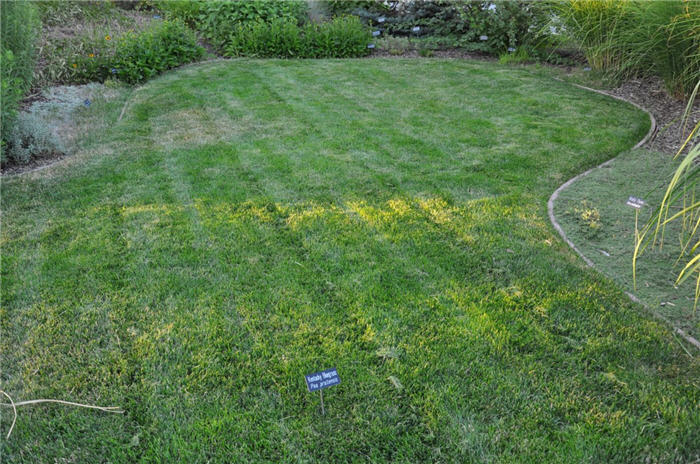| Botanical Name: Poa pratensis | |
| Common Name: Kentucky Bluegrass |

-
Anatomy
-
Culture
-
Design
Plant Type
Ground cover, Grass
Height Range
Under 1'
Flower Color
White
Flower Season
Summer
Leaf Color
Blue Green, Dark Green
Bark Color
n/a
Fruit Color
n/a
Fruit Season
n/a
Sun
Full, Half
Water
Medium, High
Growth Rate
Fast
Soil Type
Sandy, Clay, Loam
Soil Condition
Average, Rich, Poor, Well-drained
Soil pH
Acid, Neutral, Basic
Adverse Factors
Invasive
Design Styles
Formal, Mediterranean
Accenting Features
n/a
Seasonal Interest
Spring, Summer, Fall
Location Uses
Lawn
Special Uses
Erosion Control
Attracts Wildlife
n/a
Information by: Stephanie Duer
Photographer:
Photographer:
-
Description
-
Notes
This is Kentucky Bluegrass, the ubiquitous turf grass covering much of the country, including the arid west. And while Kentucky bluegrass in general has a bad rap as a water-hoggish turf grass, it has two things going in its favor: nothing covers a playfield as efficiently or repairs as quickly as bluegrass; and two, a lot of research is taking place around Kentucky bluegrass and its kin to develop varieties that are slower growing, less water-needy, more salt tolerant, and generally better suited to the arid west. If you aren't using a space where it is planted, maybe give another palatte a thought, but at the least, water bluegrass as efficiently as possible following the guidelines provided to minimize over-watering and water waste.
It may seem odd to include this in a list of water-wise plants, but Kentucky bluegrass is habitually and unnecessarily over-watered. Mowing higher (3 to 4 inches) reduces water demand, as does controlling weeds and reducing dependence on synthetic fertilizers. See the Guide for the proper care and feeding of this much-maligned plant.